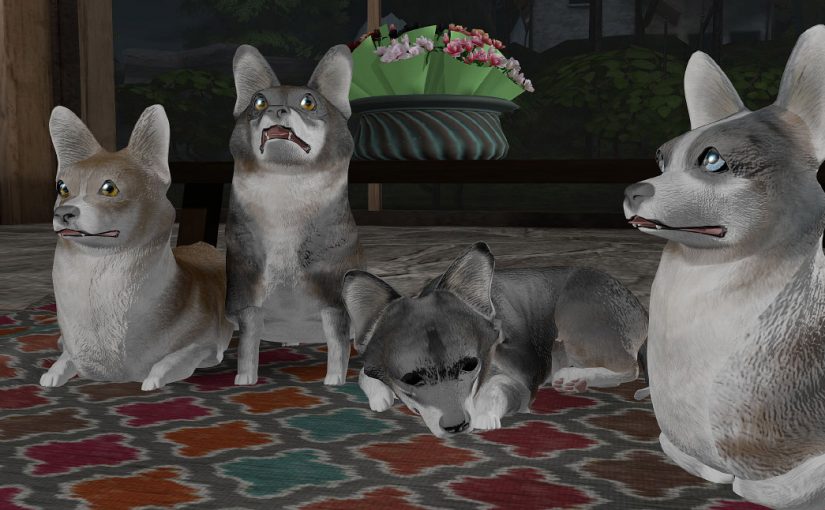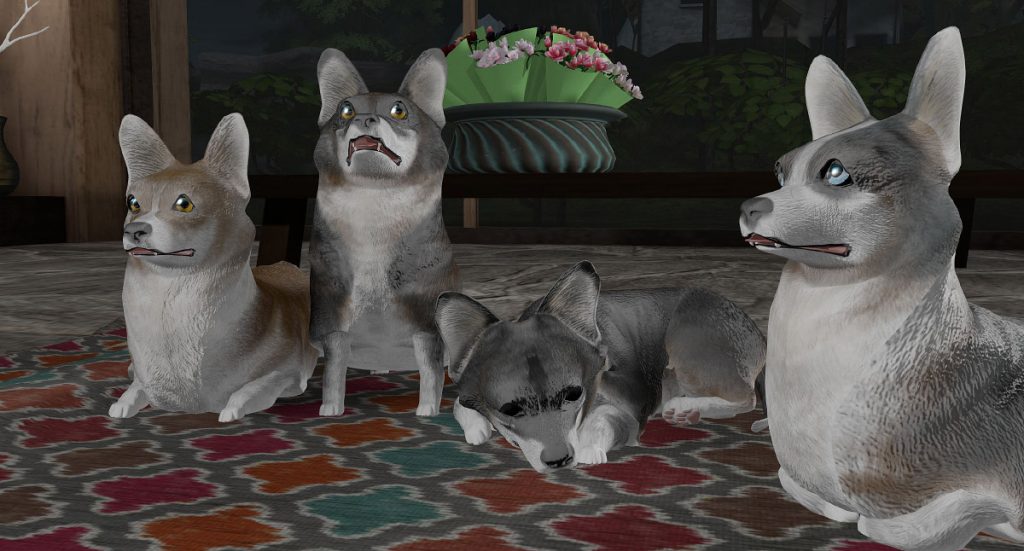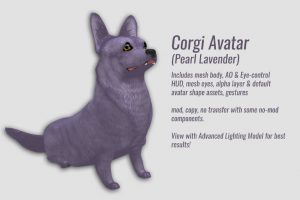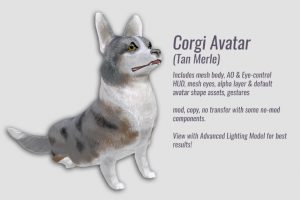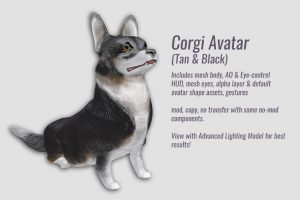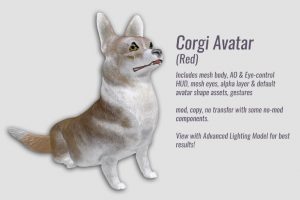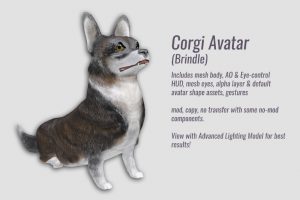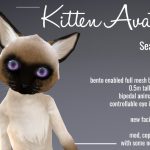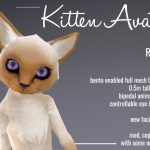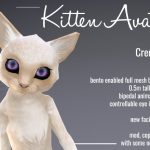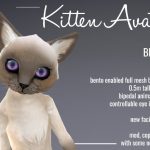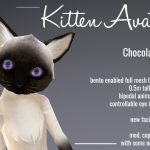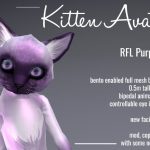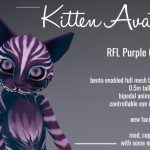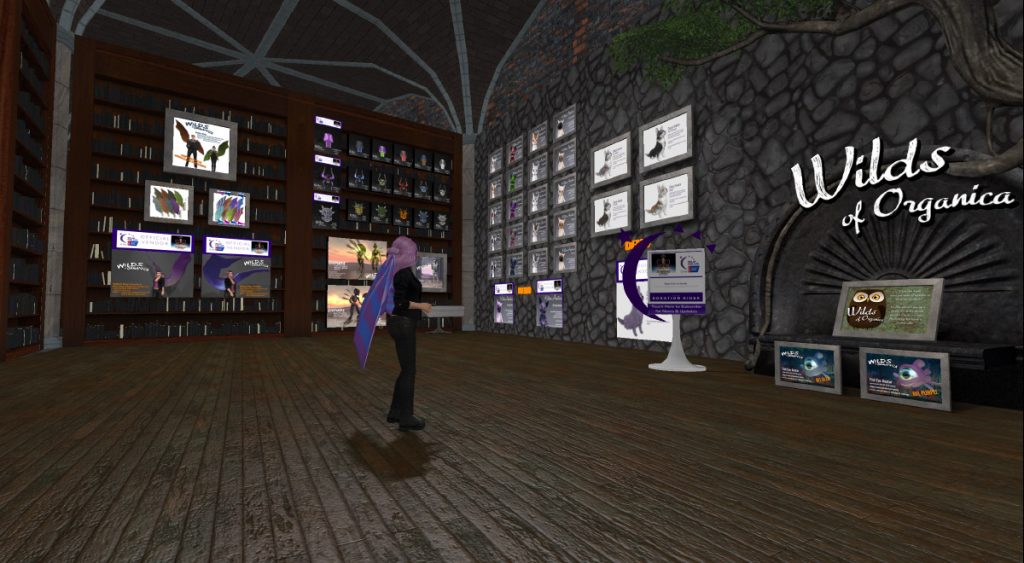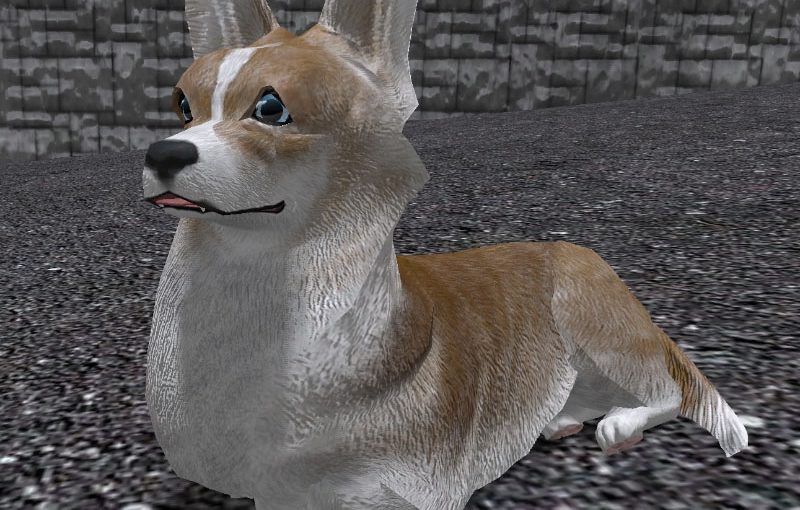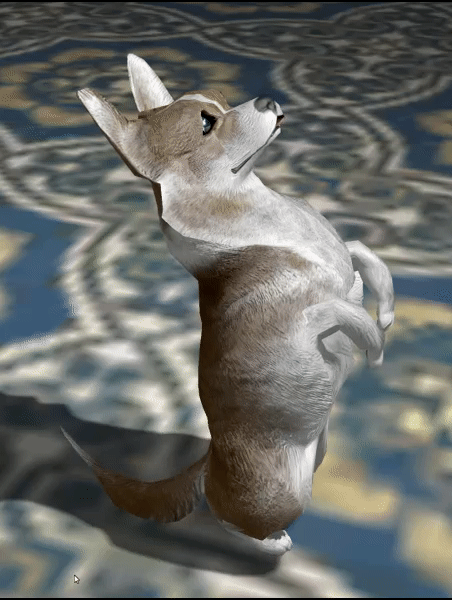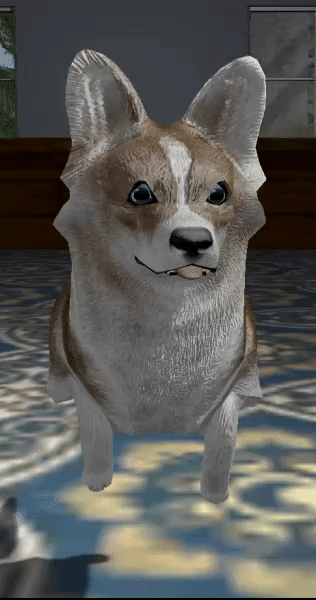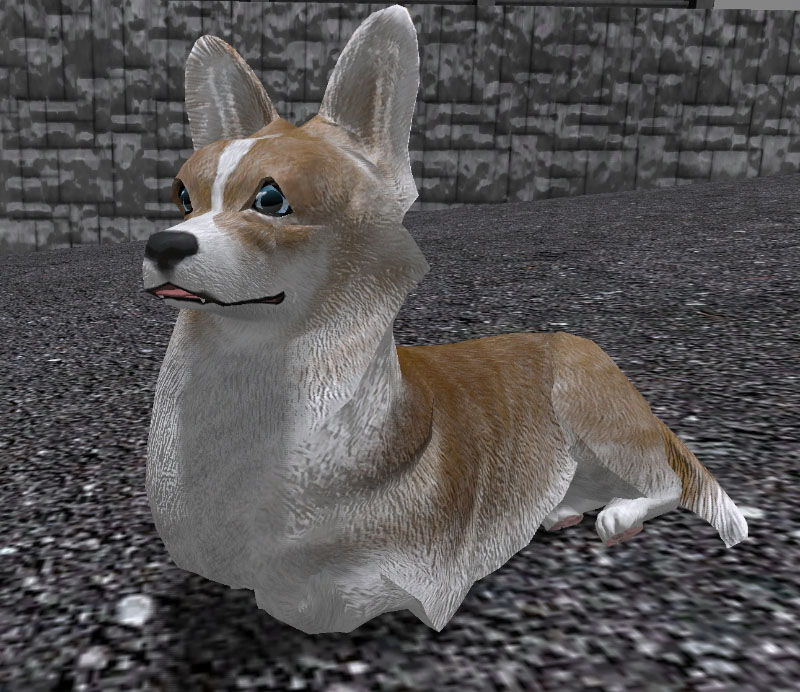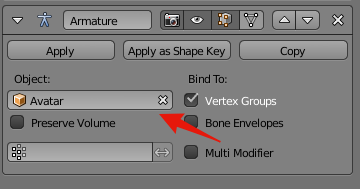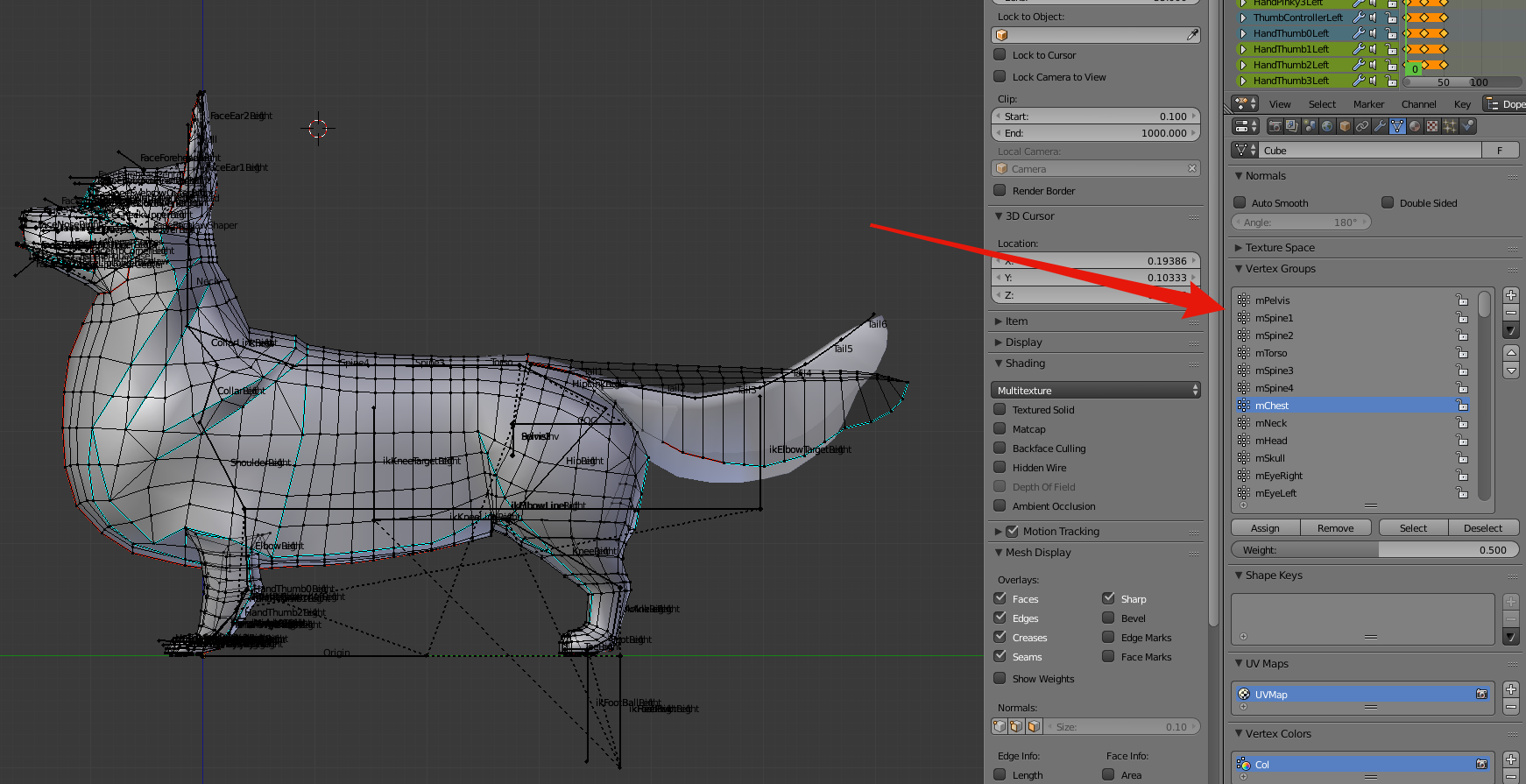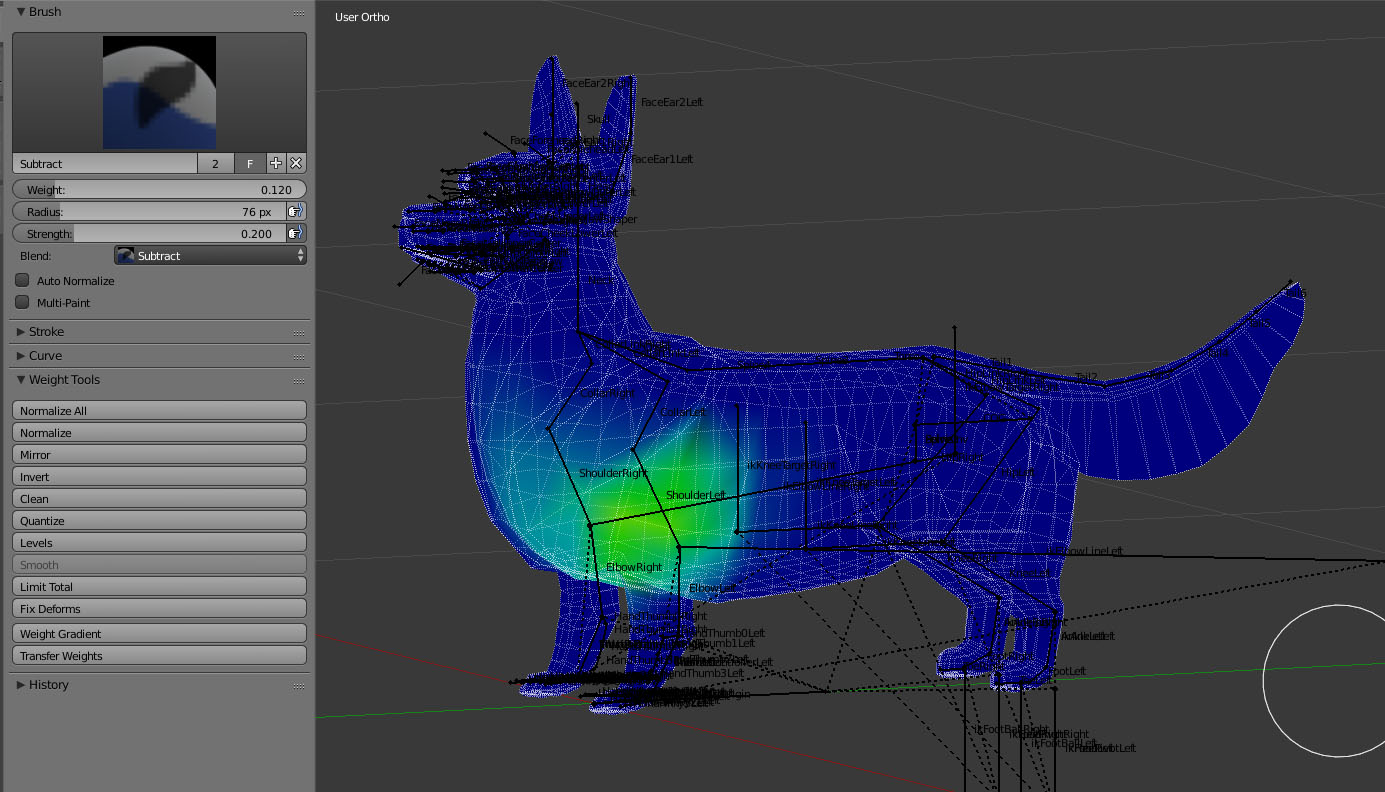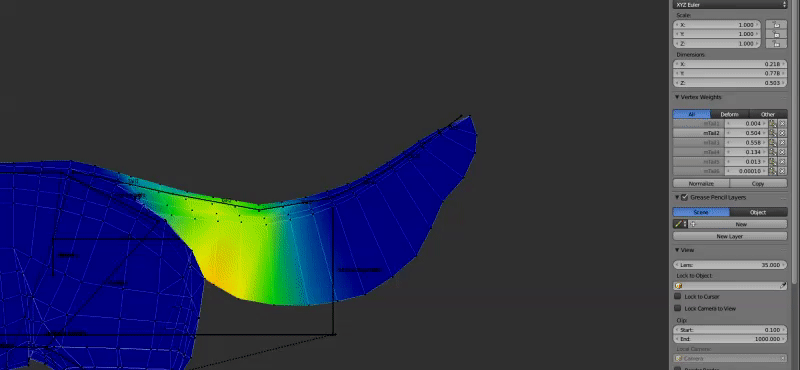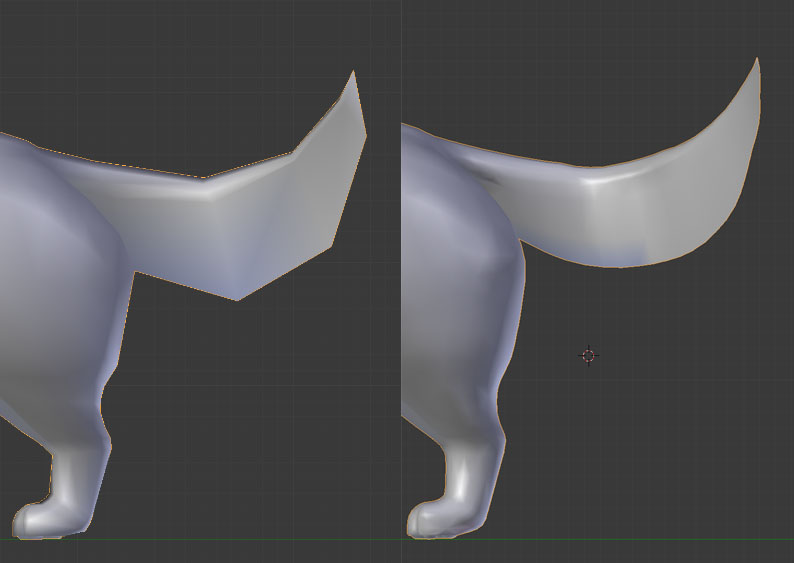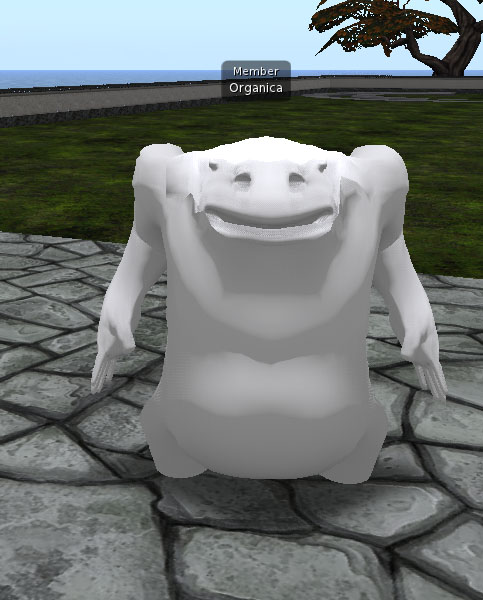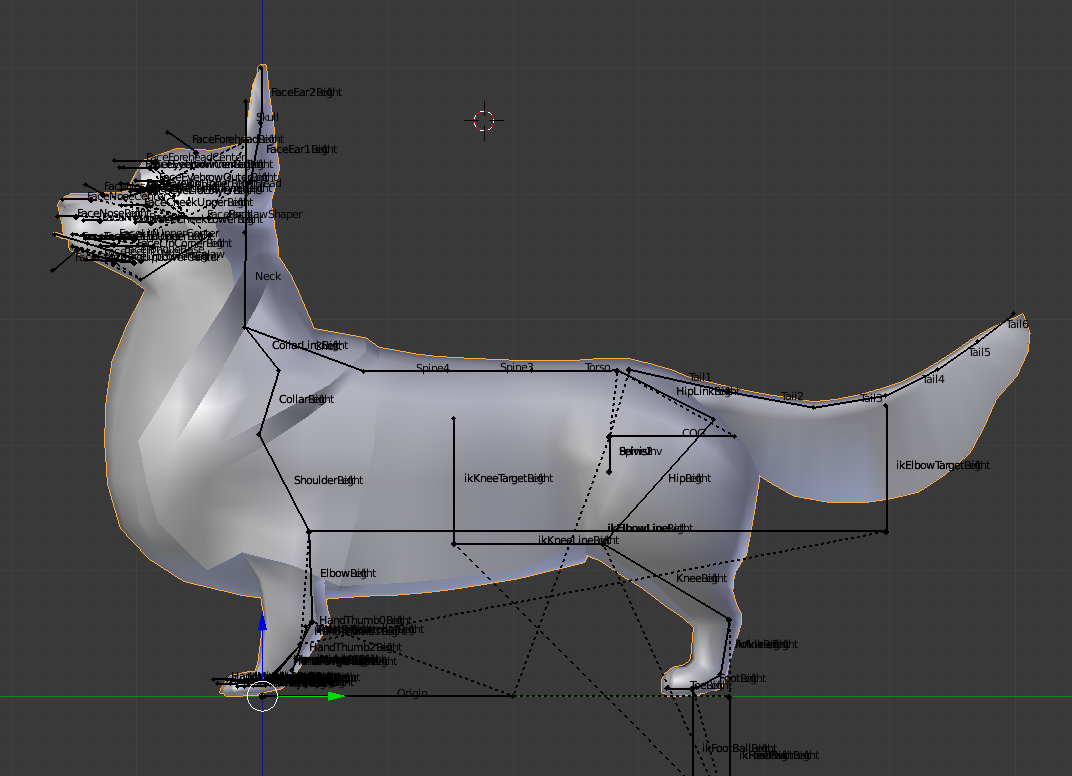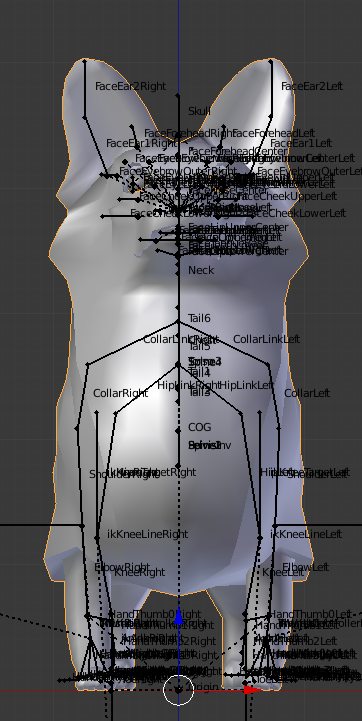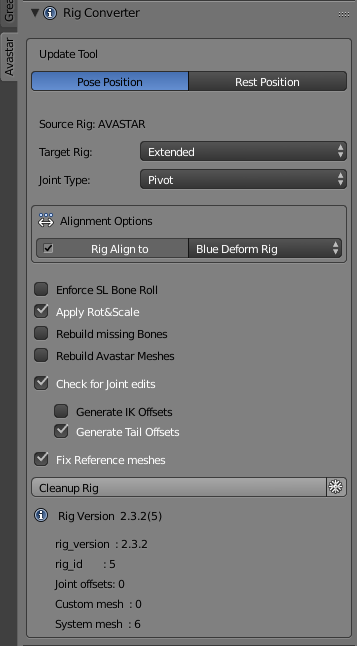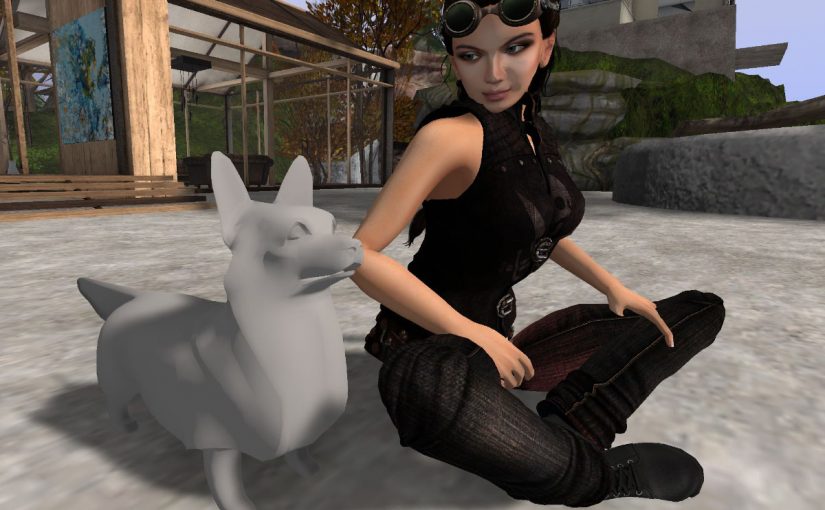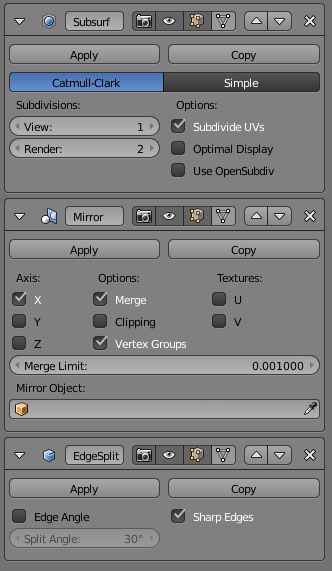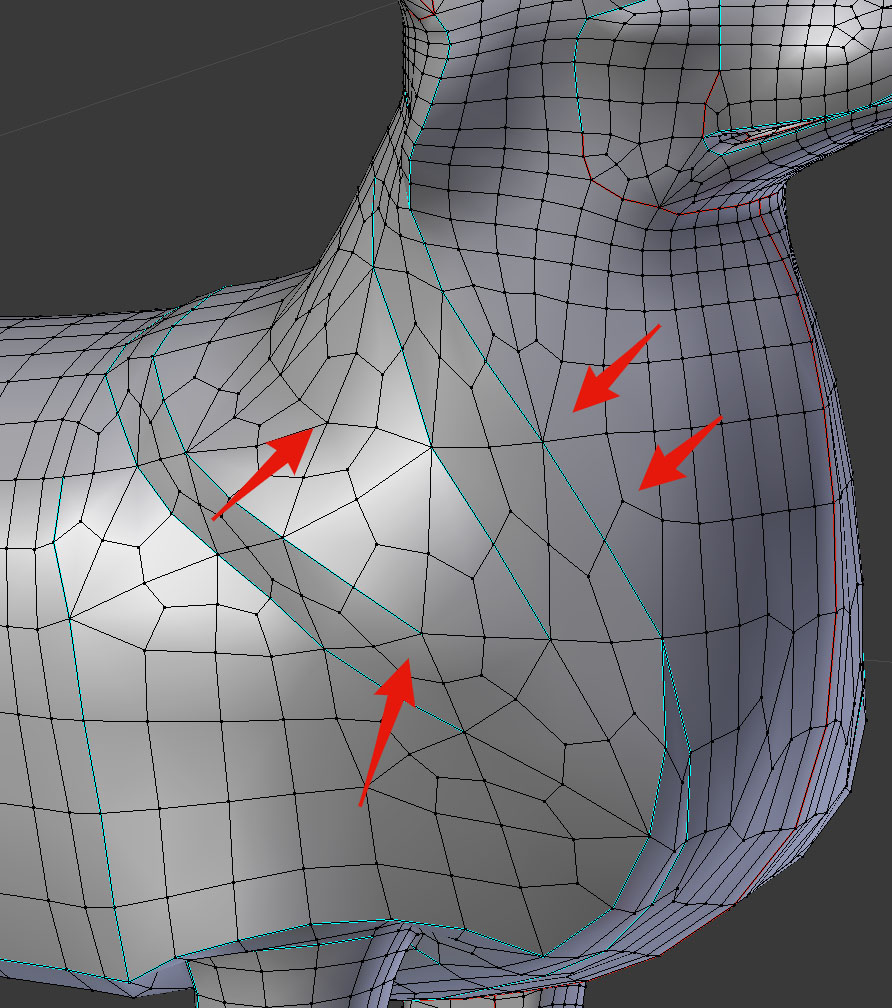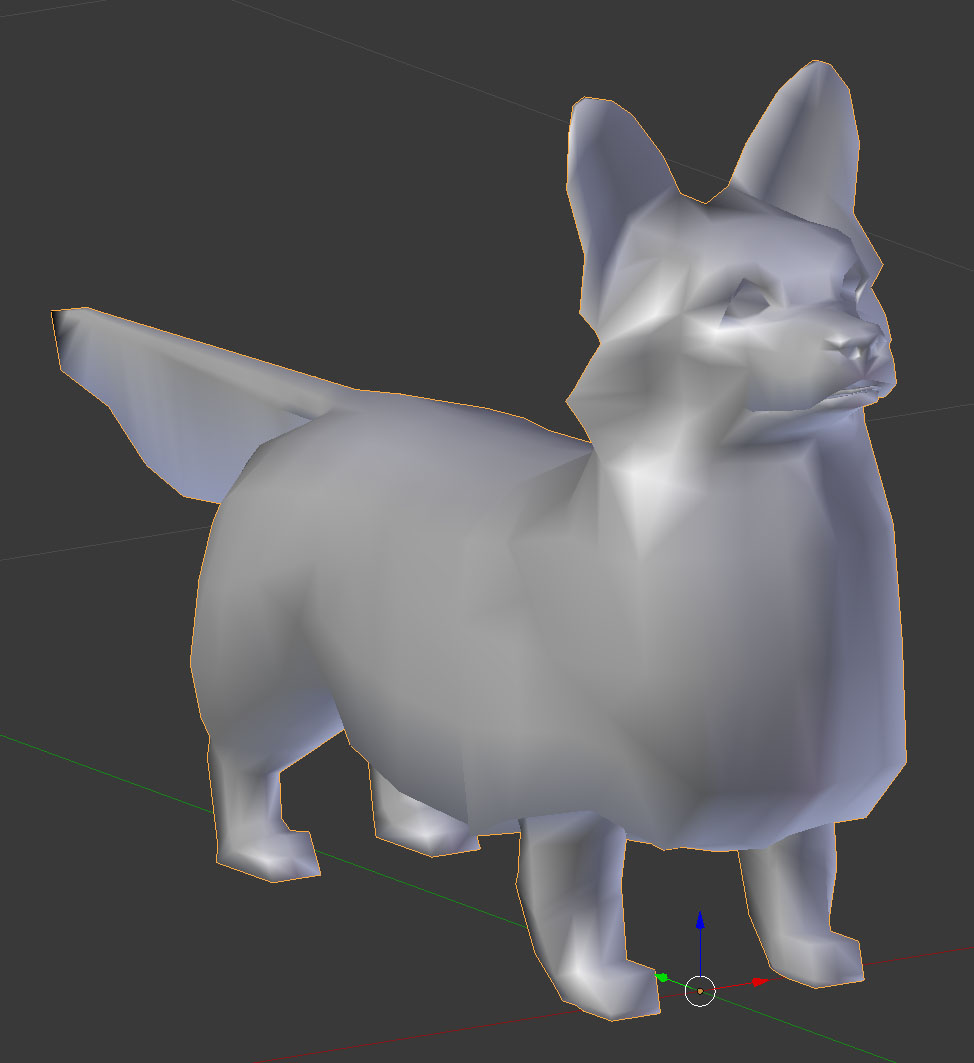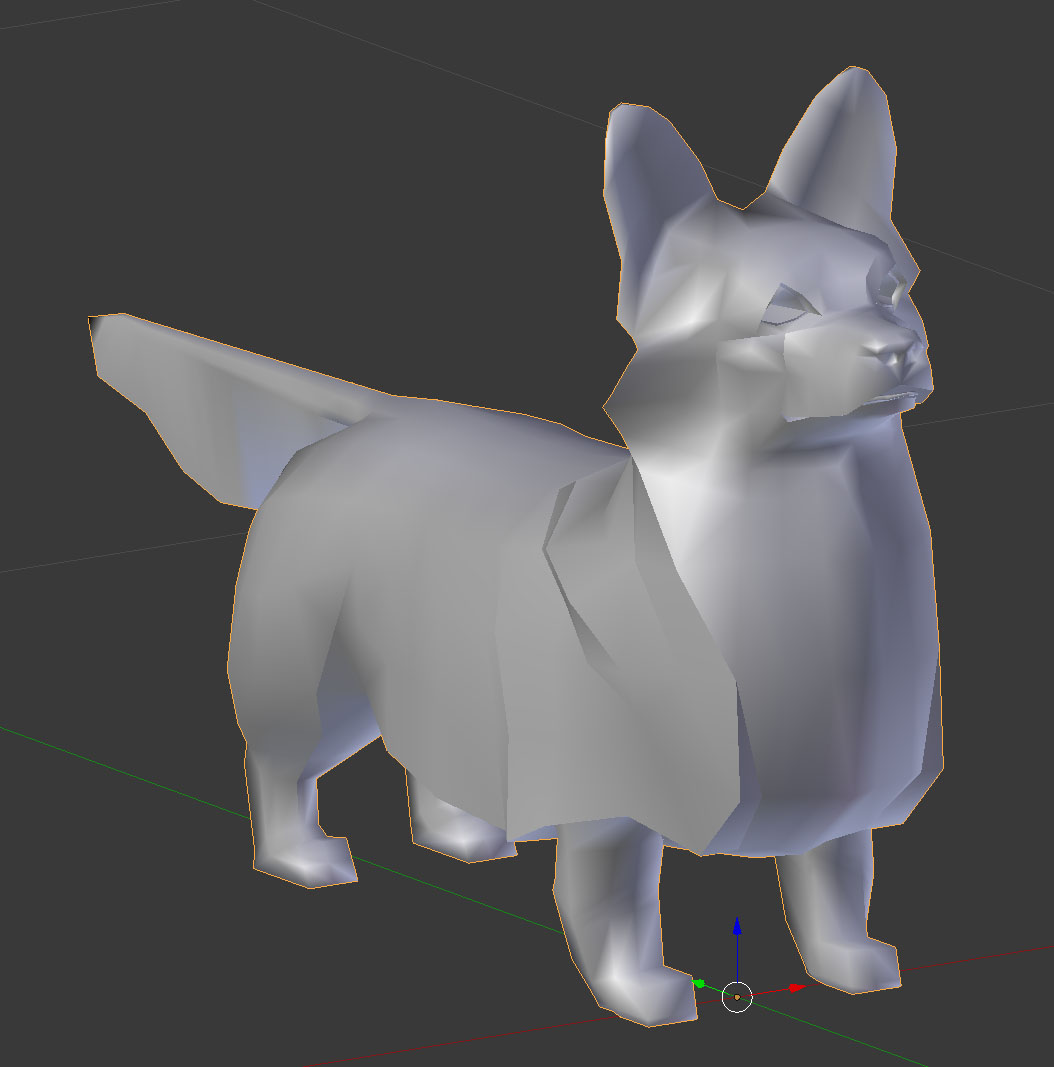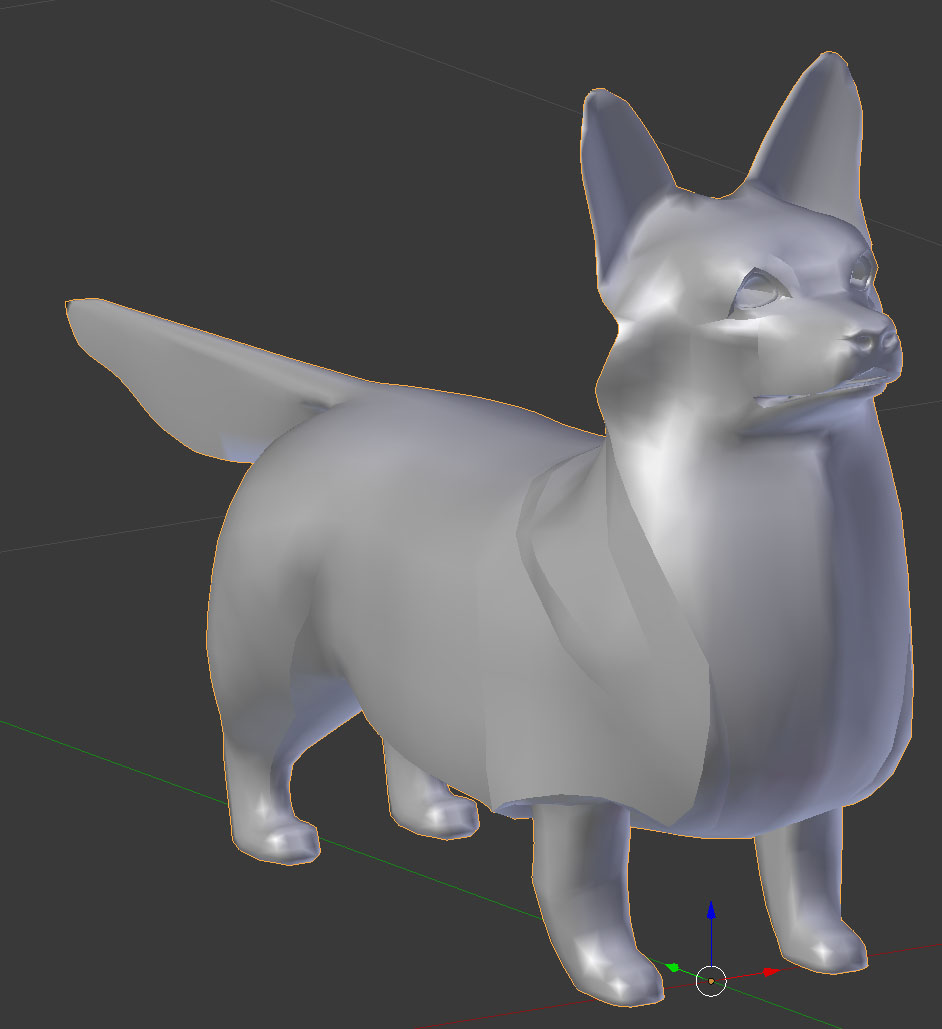Fantasy Faire is probably one of the most long-standing events still held yearly within Second Life. It’s moved in lockstep with the Relay for Life movement since at least 2009 and I can count myself fortunate to be a part of it for many many years.
There are relatively few events which are offered at the same scale for the wide spectrum of fantasy and scifi genres and I’m happy to say that, for the most part, I’ve had positive experiences – at least enough which keep me coming back year after year.
This year, I’ve chosen to release Corgi avatars on the virtual world! More details are available here, but I’ll just say that five coats are available to start, including a special RFL Pearl Lavender exclusive.
Additionally, I have decided to release a new line of coats for the kittens – Point furs! These are coats where the majority of the coat is a pale, creamy colour and the snout, ears, paws and tail gradiate towards a darker colour. There is also a brand new Point-themed RFL purple coat, PLUS the old Cheshire RFL coat has finally been updated to bento as well (if you already have one of these previous to update, please contact me directly for a free update)!
These new coated kitties have been released with the updated bento kitten avatar (1.2) so you can expect to see tail and facial movement in response to Bento animations, just like the update that was applied to all of the other kitties earlier this year.
Both of these new items can now be found at my booth at Fantasy Faire for the duration of the event (thru April 29) along with many other WoO items. If you missed the chance at picking up the two free Fisheye avatars last year, this is your chance! Additionally, this is a great opportunity to pick up various editions of wings, ears & tails, and masks – in the process helping to end the fight against cancer. All items in official RFL vendors will donate 100% of their proceeds to the American Cancer Society.
It’s been a bit of a week for me – April is typically busy for me because it’s the convergence of multiple events. At the very least, Fantasy Faire and planning for Home & Garden Expo. This year, Bloom has also been a factor, and in previous years I also had the privilege of being a part of The Arcade.
Adding to that the fact that most of my WoO releases are full avatars requiring a lot of out-of-the-ordinary setups and this is a recipe for a lot of stress!
Nonetheless, I wouldn’t be doing any of it if it wasn’t stimulating to me and I didn’t learn anything from it.
Athenaeum Arcana is a vast library, shattered by a gargantuan presence, put together by Elizabeth Jarvinen (polysail). Elizabeth has made an immersive space, making use of repeated assets to minimize load times and seamless Materials (diffuse, bump and shiny maps) to help give the region subtle but important and immersive detail that draws a visitor in.
Setting up at Fantasy Faire this year went off with minimal issue. Thanks to having been given a mock-up of my store space beforehand, I was able to roughly figure what I wanted where, although by the end of setting up, this had changed a moderate degree.
I did take a fair amount of time to juggle and rearrange, mostly because it’s not always easy to have a shop space fit just right at first try, even if a mock-up has been offered. Environment, eye-lines, figuring out what kind of eye-catches are available on-site – these are things that aren’t always present in a mock-up and may not even be ready at such time that they are delivered.
In addition to this, I spent a fair amount of time setting up RFL vendors, although I must express immense gratitude to whomever revamped the vendor situation this year.
In previous years, vendors connected to a website and required multiple variables to be set web-side before functioning in-world. This year, it seems all the team authentication got handled up-front, and they seem to have done away with any sort of web-side editing. Instead, the system is as easy as dropping the reward item in, clicking to add a price, then dragging the vendor texture to the appropriate prim.
I’ve only had a chance to skim through the other Fantasy Faire regions so far, but certainly intend to explore in greater detail when I get a chance later. Perhaps I’ll see you around?
Fantasy Faire runs from April 16 thru 29! Visit Wilds of Organica on Athenaeum Arcana region!
Looking forward, keep your eyes forward to April 25, when all Organica, Wilds of Organica and Akimeta products on Organica region will be marked down 25%!
Full details to follow.
If you enjoy what I’m doing here or think someone else might also find it of use, please feel free to share this blog with them. If you’d like to keep up to date with posts, the RSS for this blog is here, I can also be found on Twitter and Plurk. The Discord server is here.
If you really like my stuff, perhaps consider donating to my Patreon? Your continued support helps to produce weekly content (written, modelled, animated or otherwise) and helps to keep original content creation in Second Life!
Thanks for your support!
